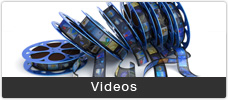Case Studies
Adventure Sports Photographer Michael Clark | EIZO
Adventure sports photographer Michael Clark has been using EIZO ColorEdge monitors for many years. He is exacting with his color and post-processing so that his images can be reproduced well. We spoke with Mr. Clark about his process and his experience with ColorEdge monitors.
What do you see as important when creating your work?
 In this day and age, to be among the top photographers worldwide demands that your images are crafted in the field with care and attention to detail, they are worked up to perfection and that your digital workflow includes a highly tuned color management system. As a professional photographer, I feel compelled to constantly learn everything I can about the craft, including how to make the best fine art prints so that when my clients get the final images they know they will reproduce well in whatever medium they choose.
In this day and age, to be among the top photographers worldwide demands that your images are crafted in the field with care and attention to detail, they are worked up to perfection and that your digital workflow includes a highly tuned color management system. As a professional photographer, I feel compelled to constantly learn everything I can about the craft, including how to make the best fine art prints so that when my clients get the final images they know they will reproduce well in whatever medium they choose.
In short, everything is important. It is vitally important for me to capture the exact millisecond at the height of the action that displays the raw power of the athlete, who themselves are taking massive risks to help create the image. When it comes to portraits or landscapes, it is important that I capture the person with drama and flair and the landscape in the best possible light. I use top-end digital cameras and choose the highest resolution sensors so I can make huge fine art prints.
My process in the field is strategic. I work with many of the world’s best adventure athletes and together we work very hard to capture their skill and essentially their art. The landscape is often just as important as the athlete. Hence, finding the right stage for the athlete to act upon is also critical. My aim is to impart to the viewer the feeling of what it would be like to be that athlete. I want the viewer to feel the exposure, the drama and the risk taken on by that athlete.
When working up the raw images in post-production, it is critical that I have a monitor and an office setting that allows me to work my images up perfectly. The monitor is the key to the image. If it can’t show me accurate colors then all the work I am doing on the image is for naught. In addition, the lighting of the workspace and the overall office set up all affect the final image as well. Finally, before shipping off the final images to a client I normally make a few prints here in my office to make sure the images will reproduce well in print or in any other medium the client chooses. The print is the final proof of the image and assures me that what I am seeing on the monitor is what the client will see in their ad campaign.


What has been your experience with ColorEdge?

In the early days of digital, I struggled with color and post-processing my images. I found it very difficult to get my digital images to look as good or better then they did with film. Of course, I progressed very rapidly on the post-processing front and drastically improved not only the color in my images but also my post-processing. But, at some point I realized that it wasn’t just my skill that was the issue.
When my first published book came out and the printer flubbed the cover image, printing the slide film image with a stark green colorcast, I got serious about color management in a way I hadn’t before. I had always calibrated and profiled my monitors using the available hardware, but I started exploring the entire color management chain and how that affected the final image. I dialed in my office to ISO 9000 standards for color management. I painted my office walls with 18% gray paint and adjusted the lighting very accurately with daylight-balanced bulbs.
In this process of dialing in my color management to a much higher degree I also investigated the best possible monitors. I quickly found out that my monitor, a very well known brand, was not anywhere near as accurate as it really needed to be. My research led me to the EIZO ColorEdge monitors. A decade ago, when I purchased my first EIZO, and it is still the case now, the ColorEdge monitors were state of the art when it comes to color accuracy. As soon as I got my first ColorEdge monitor I realized how incredible it was. I was seeing colors in my images I had never seen before. The full Adobe RGB color gamut allowed me to see all of the colors in my images – and my prints were coming out nearly identical to my display, which certainly was not the case with the old monitor.
In addition to color accuracy, the ColorEdge displays are uniform from edge-to-edge and are individually tuned at the factory insuring that the monitor is accurate across the entire display. This allows me to dodge and burn my images with confidence knowing that the monitor is giving me an extremely accurate view of my images. The ColorNavigator software built into the display also allows me to accurately calibrate the display to a higher level than any other device I have seen.
My experience with the ColorEdge monitors has shown me that the monitor you use to work up your images is just as important, if not more important, than the camera or lens you use to create the image. In the end, the color and tonality of the final image is affected more by the quality of the monitor than by the camera or the lens. Hence, in workshops and seminars, I highly recommend that photographers invest in a top-notch ColorEdge monitor.

You can see more of Michael’s work on his website at www.michaelclarkphoto.com.
Other links:
Instagram: @michaelclarkphoto
Facebook: www.facebook.com/michaelclarkphotography
Twitter: www.twitter.com/michaeljayclark
Google+: plus.google.com/u/0/+MichaelClarkPhotography
Linked In: www.linkedin.com/in/michaelclarkphotography









